Why is Fluorine Less Stable than Chlorine When Negatively Charged?
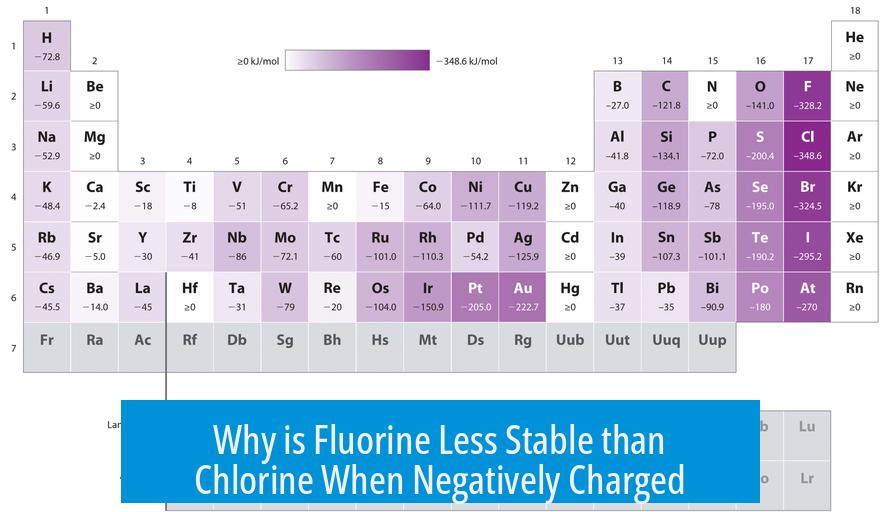
Fluorine is less stable than chlorine when it gains a negative charge because its smaller atomic radius concentrates the extra electron in a tighter space. This increases electron-electron repulsion and localizes the negative charge, reducing the ion’s overall stability.
Electron Density and Atomic Radius
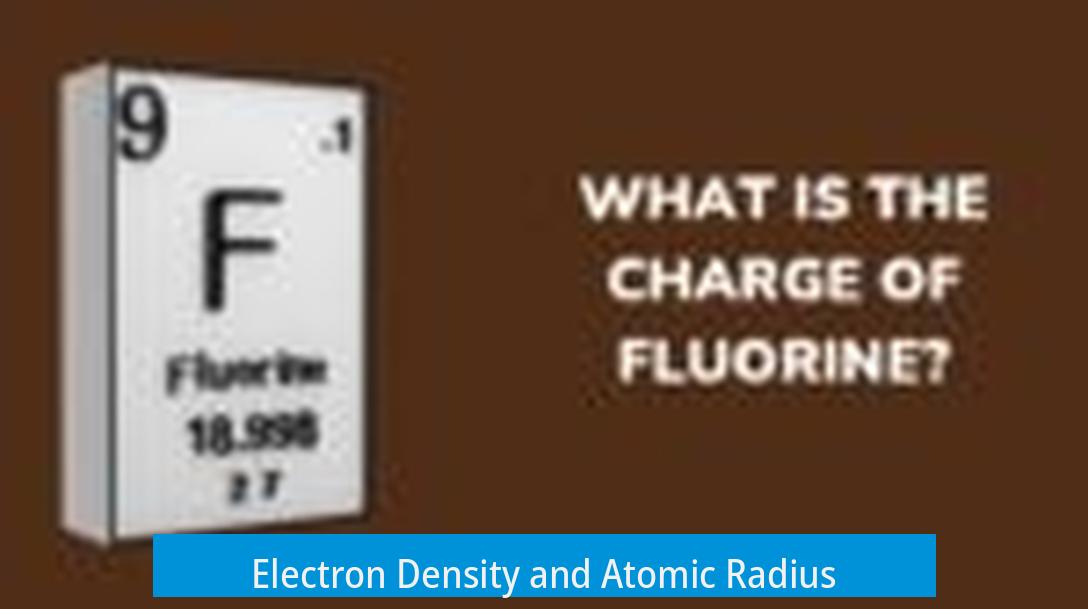
Fluoride ions have a much smaller atomic radius than chloride ions.
- Electrons in fluoride occupy a smaller volume.
- This tight confinement enhances repulsion among the electrons.
- Repulsion raises the system’s energy, lowering stability.
Charge Diffusion and Its Effect on Stability
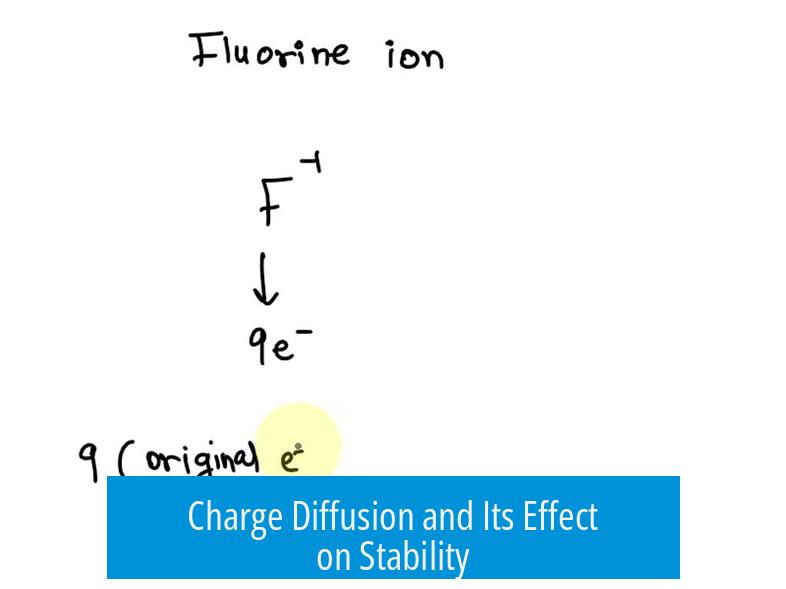
The negative charge on fluoride is less spread out compared to chloride.
- Fluorine’s small size limits the space for the extra electron.
- The charge becomes concentrated in a smaller area.
- Localized charge means higher energy density, less favorable electronically.
In contrast, chlorine’s larger atomic radius provides more space for the extra electron, allowing the negative charge to disperse. This diffusion reduces electron-electron repulsion, making chloride ions more stable.
Summary: Atomic Radius Controls Stability

| Factor | Fluoride Ion (F−) | Chloride Ion (Cl−) |
|---|---|---|
| Atomic Radius | Smaller | Larger |
| Electron Density | High (compact space) | Lower (spread out) |
| Charge Diffusion | Localized | More diffuse |
| Electron Repulsion | Stronger | Weaker |
| Ion Stability | Less stable | More stable |
Key Takeaways
- Fluoride’s small radius forces electrons into a confined space.
- Concentrated charge increases electron-electron repulsion.
- Reduced charge diffusion lowers the ion’s energetic stability.
- Chloride’s larger radius allows better charge distribution and stability.
Why is Fluorine Less Stable than Chlorine When It Has a Negative Charge? And How Does Atomic Radius Play a Role?
Fluorine is less stable than chlorine when it gains a negative charge primarily because of its smaller atomic radius, which causes a high concentration of electron density and increased repulsion. This results in a tightly packed negative charge that is less energetically favorable compared to chlorine’s more diffused and stable negative charge.
Let’s unpack why this tiny detail of atomic size makes such a huge difference in stability. If you’ve ever tried to fit a full weekend’s shopping into a tiny backpack versus a large suitcase, you get the sense of what happens when electrons cram into a small atomic space. Fluorine’s atomic radius is like that tiny backpack, whereas chlorine’s is more of a roomy suitcase.
Electron Density: The Real Space Crunch in Fluoride Ions
Imagine electrons buzzing around an atom, playing a version of cosmic bumper cars. In the case of fluoride ion (F−), electrons are packed into a very small space. This small atomic radius means that added electrons squeeze in tightly around the nucleus.
Because the electrons are all cramped, they push against each other fiercely — this is what scientists call electron-electron repulsion. It’s like when too many people try to squeeze into an elevator; discomfort rises. In fluoride, this repulsion is surprisingly strong due to the electron cloud’s high concentration within a tiny area.
With chlorine, the atomic radius is larger. This larger space means its extra electron—and the overall negative charge—has more room to spread out. The electrons in chloride ions don’t feel as crowded, so the repulsion among them is eased.
The Negative Charge and Its Diffusion: Why Size Matters
Think of the negative charge as energy. With fluorine’s small size, this charge becomes tightly localized—it’s like keeping all your money stuffed under the mattress in one room. Not the best for security or comfort, right? When charge is crammed into such a tiny volume, the energy state becomes less stable, more “high-strung.”
In contrast, chlorine’s larger size allows the negative charge to diffuse more broadly. It’s like putting your money in a well-organized bank account instead of hiding it under the mattress. The energy spreads out, making the ion more stable and less prone to “getting stressed” from the concentrated charge.
Electron repulsion and charge localization in small atoms mean the system holds more energy than it ideally wants, leading to decreased stability. This explains why fluoride ions, despite being just one element over in the periodic table, are not as stable as chloride ions when negatively charged.
So, What Does This Mean Practically?
- Fluoride ions (F−) exhibit stronger electron-electron repulsion due to the compressed electron cloud, leading to lower stability.
- The charge in fluoride is more tightly packed and less diffused, increasing the energy inside the ion.
- Chloride ions (Cl−), with their larger atomic radius, allow charge to spread out more, reducing internal repulsion and increasing stability.
This difference in stability has real-world implications. For instance, fluoride often behaves differently in chemical reactions compared to chloride, sometimes making it more reactive or less willing to stay in its ionic form depending on the environment.
Ever Wonder How This Affects Everyday Stuff?
Fluoride ions are important in dental care products, thanks to their size and charge properties influencing biological interactions. On the flip side, chloride ions are ubiquitous in biology and industry due to their relative stability and solubility. Both ions serve puzzle pieces in chemistry, but how they fit depends heavily on their atomic size and charge distribution.
A Quick Breakdown Table
| Aspect | Fluoride Ion (F−) | Chloride Ion (Cl−) |
|---|---|---|
| Atomic Radius | Small (around 133 pm) | Larger (around 181 pm) |
| Electron Density | Highly concentrated | More spread out |
| Electron-Electron Repulsion | Higher due to crowding | Lower, more spaced electrons |
| Negative Charge Diffusion | Tightly localized | Widely diffused |
| Stability of Negative Charge | Less stable | More stable |
To Wrap It Up: Why Atomic Radius is the Big Player
Atomic radius doesn’t just define an atom’s “size” — it shapes its whole personality when carrying a negative charge. Fluorine’s compact nature packs electrons into an intense, crowded space. That makes the ion grumpy, unstable, and less energetically pleased. Chlorine, with its larger radius, provides breathing room for electrons. This diffusion lowers repulsions and boosts stability.
Next time you see F− and Cl− in a chemistry set or textbook, remember: This tiny size difference is a mighty force in how they behave. The atomic radius sculpts the stability landscape of negative ions, and understanding this can unlock smarter approaches in chemistry, from materials science to biology.
Why is the fluoride ion less stable than the chloride ion?
Fluoride has a smaller atomic radius, so its extra electron is confined in a tighter space. This causes stronger repulsion between electrons, which reduces stability compared to chloride.
How does atomic radius affect the stability of negative ions?
A larger atomic radius allows the negative charge to spread out more. This diffusion lowers electron repulsion, making the ion more stable. Smaller atoms hold charges tighter, increasing repulsion and reducing stability.
What role does electron density play in ion stability?
Higher electron density means electrons are packed closely together. In fluoride, this density is higher due to its small size, causing increased repulsion and lower stability relative to chloride.
Why is the negative charge in fluoride described as less diffuse?
Because fluoride’s small size confines the extra electron to a small volume, the charge is concentrated. This makes the ion less stable compared to chloride, where the negative charge is spread out.
Does the size of the atom influence electron-electron repulsion in negative ions?
Yes, smaller atoms like fluorine cause electrons to be closer together, heightening electron-electron repulsion. Larger atoms like chlorine reduce this repulsion by providing more space for electrons.



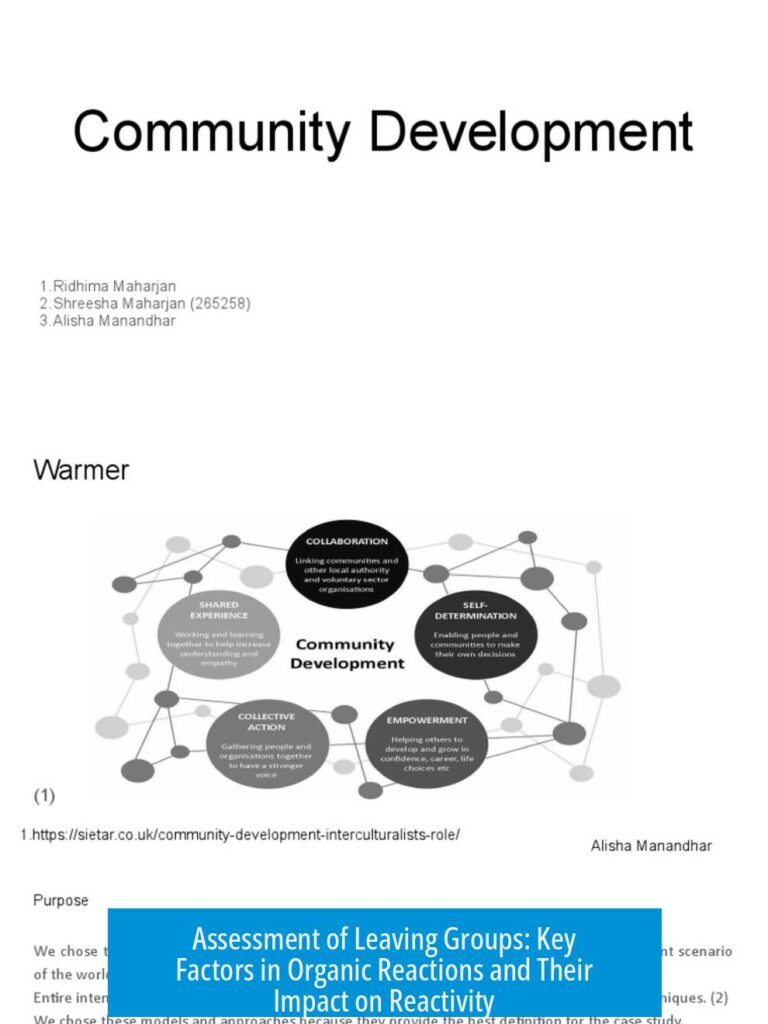
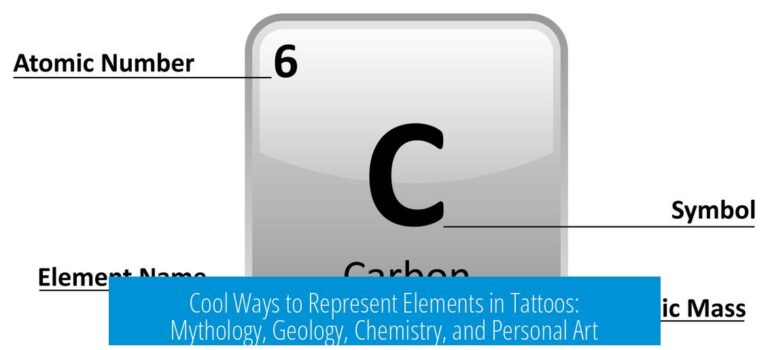
Leave a Comment